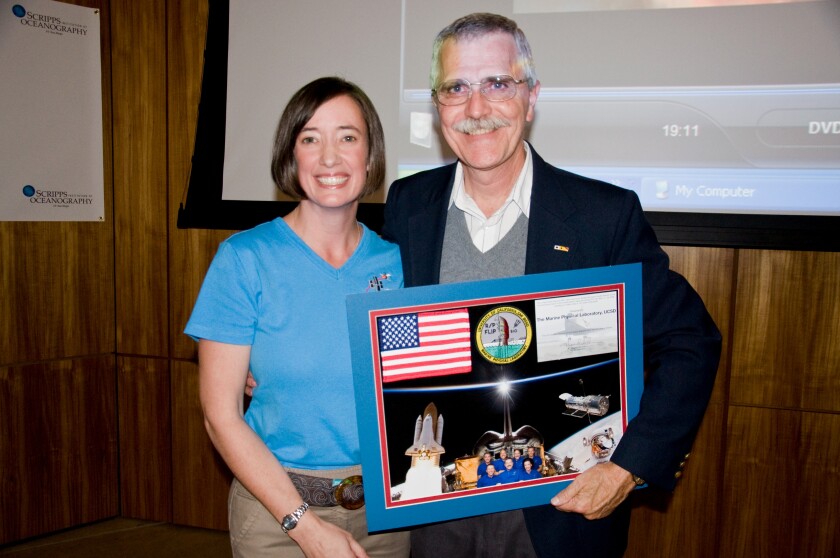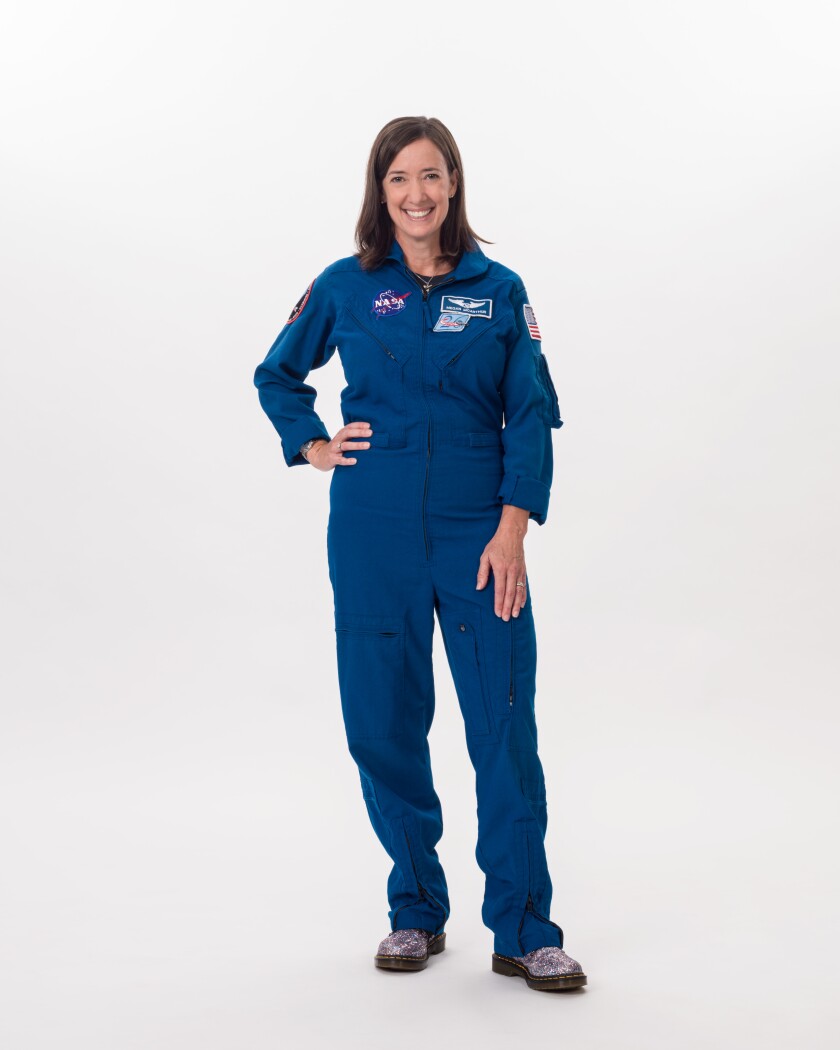Megan McArthur earned her Ph.D. in oceanography from UC San Diego’s Scripps Institution of Oceanography in La Jolla around the same time she trained to explore a much vaster frontier: space. On Friday, April 23, she will embark on her second visit into space to conduct scientific research as pilot of the NASA SpaceX Crew-2 mission to the International Space Station.
The launch, scheduled for 2:49 a.m. PDT from Kennedy Space Center in Florida, will be broadcast at NASA.gov.
McArthur and three other crew members — mission specialist Akihiko Hoshide, commander Shane Kimbrough and mission specialist Thomas Pesquet — will be aboard the SpaceX Dragon spacecraft in its second crewed flight.
The trip is McArthur’s first visit to the ISS; she and the rest of the crew will remain there for six months. McArthur will conduct research in areas including medical technology and human health.
McArthur adds this trip to the nearly 13 days she spent in space in 2009 helping to service the Hubble Space Telescope.
The current mission has her “looking forward to meeting that everyday challenge of what’s on the schedule today,” noting that “every single day is going to be different,” she said in a Scripps Oceanography article.
McArthur told SIO that her work there and “the operational aspects of doing seagoing oceanography have a lot in common with going into space.”
“We’re not suited to survive underwater any better than we are in outer space, so we use technology and different kinds of instrumentation to help us do that,” she said. “When you go out on a ship and you’re going to deploy and recover an instrument, if something breaks, you need to be able to fix it with what you have on board.”
SIO emeritus faculty member Bill Hodgkiss, who served as McArthur’s advisor during her time there, told the La Jolla Light that McArthur’s background in both aerospace engineering — in which she earned a bachelor’s degree from UCLA — and oceanography dovetail with her interest in space exploration.

Megan McArthur and her SIO advisor, Bill Hodgkiss, pictured in 2009, worked together on an experiment off Red Beach at the Camp Pendleton Marine base.
(Courtesy)
Hodgkiss, who is still active in research, said the nature of McArthur’s SIO research was geoacoustic inversion, which he said is “a remote sensing approach where you can use acoustic receptions to infer or estimate the properties of the sea floor.”
“Energy doesn’t just reflect off the sea floor; it actually propagates into the sea floor and comes back out,” he said. “The properties of the sea floor hugely influence how sound propagates underwater.”
McArthur and Hodgkiss participated in a geoacoustic inversion experiment off the coast of the Camp Pendleton Marine base’s Red Beach, with funding from the Navy.
The project was “a great opportunity for us to work with Camp Pendleton and get their permission to deploy some sensors,” Hodgkiss said. The rest of California has “people and boaters and jet skiers and whatnot, so you wouldn’t be able to do something that was free of people and noises that other boats and stuff would cause.”
McArthur told SIO she also “had the opportunity to go on other seagoing missions basically to deploy and recover larger instruments, like ocean-bottom seismometers, in much deeper parts of the ocean.”

Megan McArthur says seagoing oceanography has a lot in common with going into space.
(Courtesy)
Hodgkiss said McArthur was fascinated by “how do all these pieces come together, how do you actually operate in the ocean, how do you make remotely operated vehicles operate in the ocean and how do you sense things in the ocean.”
He said one of the most important facets of her SIO work is that she completed it in 2002, nearly simultaneously with her astronaut training, which she began in 2000.
“You would not expect that that would work,” Hodgkiss said, “because the astronaut program is incredibly intense, and once you go into it, you never expect to have enough time to do anything else in the foreseeable future.”
After McArthur completed her basic training in the astronaut program, “she was able to arrange a window of time to come back to SIO and finish up research, finish writing her thesis and defend her thesis,” Hodgkiss said.
“It’s a testament to her perseverance [that she] wanted to do both and was committed to do both and it actually worked out,” he said.
“We’re all very enthusiastic for her. This truly is a dream of hers and I think she’ll do great.” ◆
"six" - Google News
April 23, 2021 at 12:00AM
https://ift.tt/32CSJNc
Scripps Oceanography alumna to spend six months on space station - La Jolla Light
"six" - Google News
https://ift.tt/3dcBbL9
https://ift.tt/2Wis8la

No comments:
Post a Comment